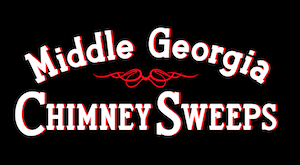Chimney Fires
Chimney fires can burn explosively – noisy and dramatic enough to be detected by neighbors or people passing by. Flames or dense smoke may shoot from the top of the chimney. Homeowners report being startled by a low rumbling sound that reminds them of a freight train or low flying airplane. However, those are only the chimney fires you know about. Slow-burning chimney fires don’t get enough air or have enough fuel to be as dramatic or visible. But, the temperatures they reach are very high and can cause as much damage to the chimney structure – and nearby combustible parts of the house – as their more spectacular cousins. With proper chimney system care, chimney fires are entirely preventable.
CREOSOTE & CHIMNEY FIRES: WHAT YOU MUST KNOW
Fireplaces and wood stoves are designed to safely contain wood-fuel fires while providing heat for a home. The chimneys that serve them have the job of expelling the by-products of combustion – the substances given off when wood burns. These include smoke, water vapor, gases, unburned wood particles, hydrocarbon volatile, tar fog and assorted minerals. As these substances exit the fireplace or wood stove and flow up into the relatively cooler chimney, condensation occurs. The resulting residue that sticks to the inner walls of the chimney is called creosote.
HOW CHIMNEY FIRES DAMAGE CHIMNEYS
Masonry Chimneys:
When chimney fires occur in masonry chimneys – whether the flues are an older, unlined type or are tile lined to meet current safety codes – the high temperatures at which they burn (around 2000º F) can “melt” mortar, crack tiles, cause liners to collapse and damage the outer masonry material. Most often, tiles crack and mortar is displaced, which provides a pathway for flames to reach the combustible wood frame of the house. One chimney fire may not harm a home. A second can burn it down.
Pre-fabricated, factory-built, metal chimneys:
To be installed in most jurisdictions in the United States, factory-built, metal chimneys that are designed to vent wood burning stoves or pre-fabricated metal fireplaces must pass special tests determined by Underwriter’s Laboratories (UL).
Most tests require the chimneys to withstand flue temperatures of up to 2100º F – without sustaining damage. Under chimney fire conditions, damage to these systems still may occur. When pre-fabricated, factory-built metal chimneys are damaged by a chimney fire, they should no longer be used and must be replaced.
Special Effects on Wood Stoves:
Wood stoves are made to contain hot fires. The connector pipes that run from the stove to the chimney are another matter. They cannot withstand the high temperatures produced during a chimney fire and can warp, buckle and even separate from the vibrations created by air turbulence during a fire. If damaged by a chimney fire, they must be replaced.
NINE SIGNS THAT YOU’VE HAD A CHIMNEY FIRE
Since chimney fires can occur without anyone being aware of them and since damage from such fires can endanger a home and its occupants, how do you tell if you’ve experienced a chimney fire? Here are the signs a professional chimney sweep looks for:
- “puffy” creosote, with rainbow colored streaks, that has expanded beyond creosote’s normal form
- warped metal of the damper, metal smoke chamber, connector pipe or factory-built metal chimney
- cracked or collapsed flue tiles, or tiles with large chunks missing
- discolored and distorted rain cap
- heat-damaged TV antenna attached to the chimney
- creosote flakes and pieces found on the roof or ground
- roofing material damaged from hot creosote
- cracks in exterior masonry
- evidence of smoke escaping through mortar joints of masonry or tile liners
If you think a chimney fire has occurred, call a Certified Chimney Sweep for a professional evaluation. If your suspicions are confirmed, a certified sweep will be able to make recommendations about how to bring the system back into compliance with safety standard. Depending on the situation, you might need a few flue tiles replaced, a relining system installed or an entire chimney rebuilt. Each situation is unique and will dictate its own solution.
PROPER MAINTENANCE
Clean chimneys don’t catch fire. Make sure a Certified Chimney Sweep inspects your solid fuel venting system annually, and cleans and repairs it whenever needed. Your sweep may have other maintenance recommendations depending on how you use your fireplace or stove.


